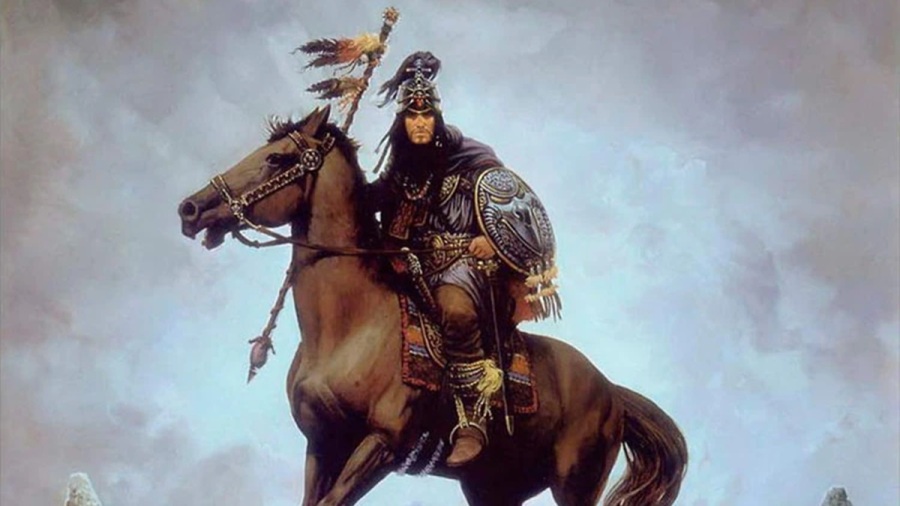The old saying from Spaceballs is that evil will always triumph because good is dumb. In the Forgotten Realms, it’s the other way around – evil is so very, very stupid. To illustrate that point, Chapter 5 opens up with the following off-screen event:
“Cyric arrives in Scardale, leading a Zhentilar force. To test this rising star in his ranks, Bane has sent him (along with Durrock, the assassin who led the assault on the PCs) to Tantras, to kill Kelemvor for his treachery and to capture Midnight. Bane is worried that the PCs are getting close to the Tablet of Fate.”
You would think that Bane curing Kelemvor of his panther-itis would have come with a price, but it didn’t. Bane gave Kelemvor everything he needed on good faith that the warrior would betray his friends. Moreover, he’s worried that the PCs are getting close to the Tablet of Fate…didn’t he just capture them last chapter? It’s a case of, “Why don’t you just kill them?” He knows that Midnight is the one of value, and she was sitting bound and drugged in a cell when either Adon or the PCs saved her. Had Bane just killed the helper characters, he wouldn’t have had to make his idiot bargain with Kelemvor in the first place. Not that I’m advocating that the PCs should have been killed off, but it would have been nice to see a villain show some competence. Bane supposedly got his divinity by tricking the old god of death, Jergal, into relinquishing his power. Did Jergal have the intelligence of a tree stump, or has Bane just become really stupid in his later years?
Before the events begin, the PCs finally arrive in Tantras. A guardsman calls out to them as they dock:
“Ho, the ship!” bellows one, from a raised stone deck ahead of you. “Lose way – you’re too fast in, by far! Fend you off from these” – he waves at three gigantic, seagull-covered spires, rising dark and glistening from the water – “and turn in here. That beyond’s for larger boats. Turn in, I say!”
Around the officer, as he speaks, a dozen archers come to look down at you, and ready shafts to their bows.
Wait…what?
This is going a bit far…the designer is begging to give the PCs an excuse to get killed here. The docking could have gone nice and smooth, but instead the PCs’ first impression of Tantras is thirty archers aiming bows at them for what amounts to illegal parking. If the PCs ignore the warning, they become perforated. If they have common sense, they dock and everything goes smoothly. An adventure is perilous enough as is…is it really necessary for a module to contain the possibility of the PCs getting killed by overzealous traffic cops?
Continue reading “Troubled Times, Troubled Adventures: Tantras, part five” →










